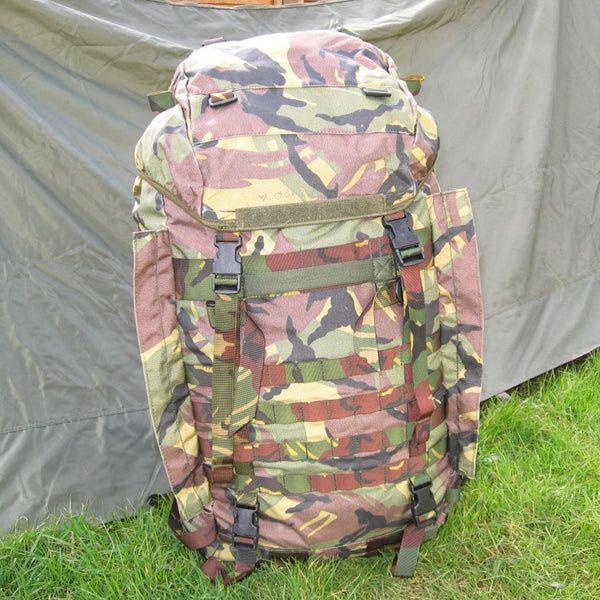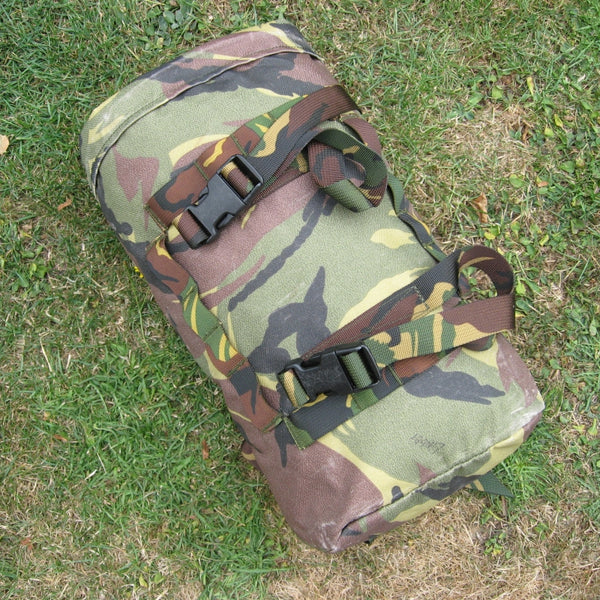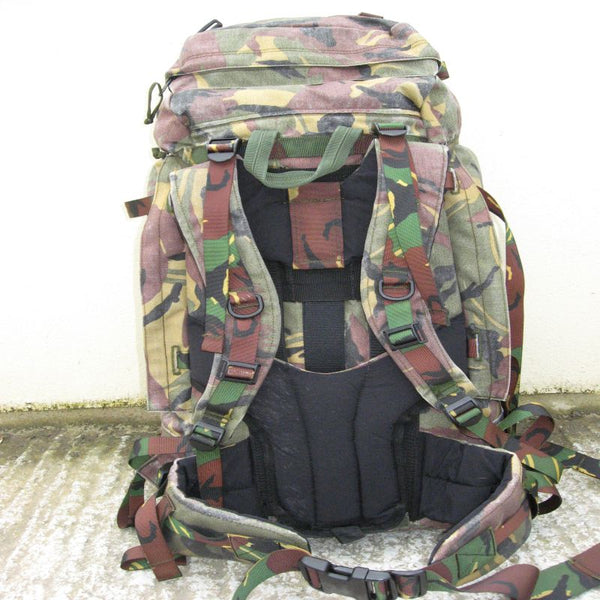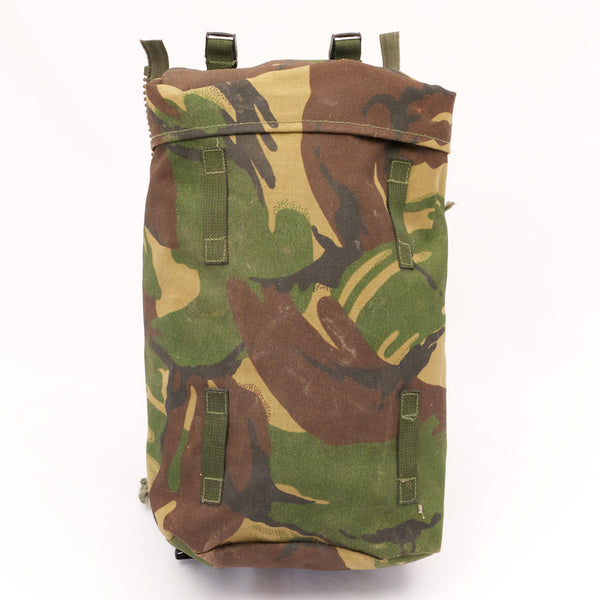The best Bushcraft Backpack. The Sabre 45 offers a reliable and durable carrying system making it an ideal Rucksack for buscraft & outdoor activities.

karrimorsf.com
The Karrimor SF Sabre Side Pockets are the perfect solutions to adding more space to your PLCE comparable Rucksack or Backback.

karrimorsf.com
These Dutch army
Sting rucksacks are very similar, but larger. The Karrimor SF Sabre 45 is rather a summer and 3 seasons rucksack for British climate and circumstances, the Dutch army Sting rucksacks are rather 3 season and mild winter rucksacks.
The Karrimor SF Sabre 45 has 45 litres in the main rucksack plus 2x 12,5 = 25 litres in the side pouches, together 70 litres. The Dutch army Sting rucksack has 60 litres capacity in the main rucksack plus approximately 2x10 litres in the side pouches, altogether rather 80 litres. And you can attach here via the MOLLE system on the belly of the rucksack even more additional little pouches, for example Dutch army or British army MTP Osprey 2x water bottle pouches and the slightly smaller utility (all purpose) pouches with additional draw string snow collar under the flap that avoid loosing small items, what is very handy for camping and less far hiking or especially for traveling in car, bus and train and in camps but adds a bit unneeded weight to the complete system as these pouches are relatively heavy compared to lightweight bags for inner organisation. For more static camping that's a great option nevertheless, as you can better reach your army water bottles and mug and pack your washkit and small micro fibre towel seperated. And you could also put into a fourth pouch some kitchen stuff like cooking chaine, stove, spices or whatever, a lightweight hammock also would fit here well.
"A place for everything and always everything in it's place" is top secret No1 if you want to spend a recreational time.
These smaller additional pouches help a lot to keep your stuff well assorted.
But anyway both rucksacks can be recommended and both options are a good deal, although the invested amount of money is very different.
Dutch generation 1 needs Dutch generation 1 side pouches. Generation 2 is interchangable with British army PLCE side pouches.
Attention:
The Karrimor SF Sabre 45 has no adjustable back carrying system!
It is built for the average Brit. Neither for dwarves nor for giants.
The Dutch army rucksacks have an adjustable back carrying system and also fit onto small and very tall persons.
As a tall person also needs a larger sleeping bag and clothing it's in this case no fault to get also a slightly bigger rucksack. And the slightly higher weight doesn't matter in this case, because a tall guy also can carry it easily.
If we talk about the average beginner, a young healthy and sporty man, the weight of the loaded rucksack isn't so horrible important anyway. That doesn't mean, that he shouldn't pay a bit attention which weight has new bought equipment, because the lower the weight, the more comfortable the rucksack will ride on your shoulders of course.
And a usual beginner's fault is to think, that one can carry every summer soloist equipment easily. If you go for camping in the colder month the stuff suddenly becomes pretty heavy all together.
And a nice cute girl friend also suddenly can change totally the game, as you now have to carry additional a two man tent of approximately 3 kg and additional water and food. As she usually is smaller than you, she carries only her personal stuff. Less tall usually means less strong and more steps per kilometre. Who is a fair gentleman doesn't use his girlfriend as a pack horse!
For summer use the Dutch Sting rucksack generation 2 is the better choice than generation 1 because it has 4 horizontal compression straps at the main compartment. That means you get it tight to your back even if it isn't full.
Generation 1 doesn't have these straps.
It's less important for static camping and winter use, but pretty important for summer hikes, especially in more complicated terrain.
Genuine issue heavy duty rucksack. This Dutch pack has a fantastic following and comes highly recommended. Well designed and a comfortable carry, even when heavily laden. Zip configuration on gen-1 secures in a downwards manner. In brief: Facility to up-size with compatible side pouches -...

www.endicotts.co.uk
Genuine issue #10 zip-DOWN side pouch / pocket for various (infantry) rucks and packs. This side pouch is designed with a zip-downwards configuration, so compatible with gen-1 issue Dutch (& contract-made) Strike, Sting and Saracen packs. Usual quality with this era of kit applies. In fact, this...

www.endicotts.co.uk
Genuine issue heavy duty rucksack. This Dutch pack has a fantastic following and comes highly recommended. Well designed and a comfortable carry, even when heavily laden. Zip configuration on gen-2 secures in an upwards manner, making it compatible with British P.L.C.E. side pouches. In brief...

www.endicotts.co.uk
Genuine issue pouch (post 1995), and as used on the sides of P.L.C.E. D.P.M rucksack / bergen. Capacity to easily take waterproofs / rations / water canteen / ancillaries etc. Usual robust build quality per this era of kit. Colour: D.P.M Material: C-dura Origin: U.K Size: 35cm x 20cm x 10cm -...

www.endicotts.co.uk
The Sting also exists in a relatively rare black Dutch navy version and is currently produced in the new Dutch army camouflage pattern. Both can be found in the Netherlands if one really wants it. But the Dutch DPM woodland pattern, that's nearly identic with the British army DPM, is a very good choice for stealth camping anyway and fits well to used British field uniforms and other easily available British army equipment.
Older olive green Sting rucksacks exist too, have the old ALICE clip straps instead of the modern MOLLE system and are everything else than easily available and usually not very cheap if you can find one.








